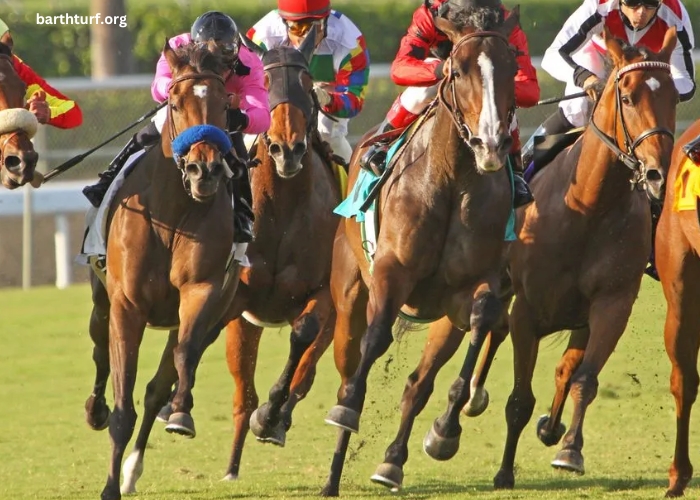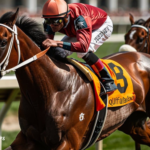Horse racing has long been a captivating sport, drawing in fans and bettors alike with its thrilling events and the potential for lucrative wagers. One of the most popular forms of betting within this realm is the 100 Pour 100 Tiercé. This specific betting type offers not only a chance to win big but also engages participants in a strategy that combines knowledge, intuition, and luck. As horse racing continues to evolve, understanding the nuances of the 100 Pour 100 Tiercé is essential for anyone looking to enhance their betting experience and improve their odds of success.
At its core, the 100 Pour 100 Tiercé involves selecting a specific combination of horses that you believe will finish in the top three positions of a race, in any order. This type of bet requires an in-depth analysis of the horses, jockeys, trainers, and track conditions. The allure of the 100 Pour 100 Tiercé lies in its balance of risk and reward; while it can be challenging to predict the exact finishing order, the potential payout can be significantly higher than more straightforward betting options. This article will explore various facets of the 100 Pour 100 Tiercé, from its mechanics and strategies to the historical context that has shaped its popularity among bettors.
What Is the 100 Pour 100 Tiercé and How Does It Work?
The 100 Pour 100 Tiercé is a specific betting format that allows participants to wager on the outcome of horse races. To place a bet on the 100 Pour 100 Tiercé, one must select three horses they believe will finish in the top three positions. Unlike some other betting formats where the order of the horses is fixed, in the 100 Pour 100 Tiercé, the horses can finish in any order. This flexibility increases the chances of winning, as bettors are not confined to predicting the exact sequence of finishers.
When placing a 100 Pour 100 Tiercé bet, it’s essential to consider various factors that can influence the outcome of a race. These factors include the horses’ past performances, the jockey’s experience, the trainer’s track record, and even the prevailing weather conditions. By analyzing these elements, bettors can make more informed decisions about which horses to select for their 100 Pour 100 Tiercé bets. The thrill of the race is amplified as bettors watch their chosen horses compete for the coveted top three spots.
Additionally, the payout structure for the 100 Pour 100 Tiercé is designed to reward those who successfully select the winning horses. Depending on the odds of the horses and the total amount wagered, successful bettors can receive a significant return on their investment. This potential for higher payouts, combined with the strategic considerations involved, makes the 100 Pour 100 Tiercé an exciting option for horse racing enthusiasts.
What Strategies Can Be Employed for Successful 100 Pour 100 Tiercé Betting?
Success in the 100 Pour 100 Tiercé often hinges on a well-thought-out strategy that incorporates research and analysis. One effective approach is to closely monitor the form of each horse leading up to the race. This involves reviewing the horses’ past performances, taking note of their finishing positions in previous races, and assessing how they fared against similar competition. Understanding a horse’s recent performance trends can provide valuable insights into its likelihood of finishing in the top three.
Another key strategy for the 100 Pour 100 Tiercé is to consider the role of the jockey and trainer. A skilled jockey can make a significant difference in a horse’s performance, especially in close races. Evaluating the history and success rate of the jockeys in previous races can offer additional context. Similarly, a trainer’s experience and success in preparing horses for competition can influence the outcome. By considering these elements, bettors can refine their selections and increase their chances of winning.
Additionally, analyzing the race conditions, such as the type of track surface and the weather, can further enhance a bettor’s strategy. Some horses perform better on certain surfaces, while others may excel in specific weather conditions. By combining insights about the horses, jockeys, trainers, and track conditions, bettors can craft a more informed betting strategy for the 100 Pour 100 Tiercé.
How Do Past Performances Impact the 100 Pour 100 Tiercé Outcomes?
The significance of past performances in horse racing cannot be overstated, particularly when it comes to the 100 Pour 100 Tiercé. Historical data provides a wealth of information that can help bettors make educated decisions. Analyzing the finishing positions of horses in previous races can reveal patterns and trends that may be indicative of future performance. For instance, if a horse consistently finishes in the top three against strong competition, it may be a reliable choice for future bets.
Moreover, understanding how horses perform under different conditions is crucial for successful 100 Pour 100 Tiercé betting. Some horses may have a track record of performing well on wet surfaces, while others might thrive in dry conditions. By examining past performances under various circumstances, bettors can identify horses that are more likely to succeed in the upcoming race, enhancing their overall strategy.
In addition to individual horse performances, examining the outcomes of previous races between competing horses can offer valuable insights. Head-to-head records can reveal which horses tend to outperform others when racing against similar competition. This information can be particularly useful when selecting horses for a 100 Pour 100 Tiercé bet, as it highlights potential rivalries and competitive dynamics that may influence the race outcome.
What Role Do Odds Play in the 100 Pour 100 Tiercé Betting?
Odds are a fundamental aspect of betting in any form of gambling, and the 100 Pour 100 Tiercé is no exception. Understanding how odds work is essential for bettors looking to maximize their potential returns. Odds reflect the bookmakers’ assessment of a horse’s chances of winning or placing in the top three, and they fluctuate based on various factors, including betting patterns, horse performance, and public sentiment.
When placing a 100 Pour 100 Tiercé bet, it is important for bettors to not only consider the likelihood of each horse finishing in the top three but also the potential payouts associated with their selections. Higher odds indicate a lower probability of success but offer larger payouts if the horse does indeed perform well. Conversely, lower odds suggest a higher likelihood of placing, but the returns may be more modest. A strategic bettor will weigh the risks and rewards associated with different odds, crafting a balanced betting portfolio that maximizes potential gains.
In addition, following the changes in odds leading up to the race can provide insight into public perception and expert opinions. If the odds shift dramatically for a particular horse, it may indicate that the horse is receiving increased attention or that there are underlying factors that bettors should consider. By staying attuned to these fluctuations, participants in the 100 Pour 100 Tiercé can make more informed decisions and adjust their strategies accordingly.
How Can Bettors Stay Informed About the 100 Pour 100 Tiercé?
Staying informed is crucial for success in the 100 Pour 100 Tiercé and for making sound betting decisions. Bettors can leverage a variety of resources to gather information and insights that inform their selections. One of the most effective ways to stay informed is by following expert analyses and predictions provided by horse racing analysts. These professionals often offer detailed breakdowns of upcoming races, including assessments of horse form, jockey performance, and track conditions.
Additionally, many websites and platforms provide statistics, historical data, and race previews that can help bettors understand the nuances of the 100 Pour 100 Tiercé. By accessing these resources, bettors can analyze trends and make more informed choices. Joining online forums or communities dedicated to horse racing can also be beneficial, as these platforms provide opportunities for bettors to exchange ideas, strategies, and insights with one another.
Furthermore, attending races in person or watching them live can enhance a bettor’s understanding of the sport. Observing how horses perform under varying conditions and engaging with other fans can provide valuable context that may not be captured in statistics alone. By immersing themselves in the racing environment, bettors can gain a deeper appreciation for the 100 Pour 100 Tiercé and refine their strategies accordingly.
What Are the Common Mistakes to Avoid When Betting on the 100 Pour 100 Tiercé?
Even experienced bettors can fall prey to common pitfalls when wagering on the 100 Pour 100 Tiercé. One frequent mistake is failing to conduct adequate research before placing bets. Relying solely on gut feelings or popular opinion without understanding the intricacies of the horses and their performances can lead to poor betting choices. Taking the time to analyze the available data and considering various factors can greatly improve one’s chances of success.
Another common error is neglecting to assess the impact of track conditions. As previously mentioned, certain horses excel under specific conditions, and failing to account for this can skew results. Bettors should always check the latest track conditions before placing their 100 Pour 100 Tiercé bets, ensuring that they are selecting horses that are well-suited for the race environment.
Additionally, emotional betting can cloud judgment. It is essential to approach the 100 Pour 100 Tiercé with a clear mind and a rational perspective. Betting on a favorite horse solely because of personal preference, rather than evidence-based analysis, can lead to missed opportunities. Establishing a disciplined betting strategy and sticking to it can help bettors avoid these emotional pitfalls and make more rational decisions.
Conclusion
Engaging in the 100 Pour 100 Tiercé offers an exhilarating opportunity for horse racing enthusiasts to enhance their experience while potentially reaping rewards. Understanding the mechanics, employing effective strategies, and staying informed about the ever-evolving landscape of horse racing are essential components for success. By avoiding common mistakes and leveraging available resources, bettors can navigate the complexities of the 100 Pour 100 Tiercé more effectively. Ultimately, the thrill of watching the races unfold, coupled with the strategic challenge of making informed bets, makes the 100 Pour 100 Tiercé an exciting and rewarding aspect of the horse racing world. As the racing season progresses, the allure of the 100 Pour 100 Tiercé continues to captivate bettors, providing endless possibilities for those willing to dive into this fascinating realm.



